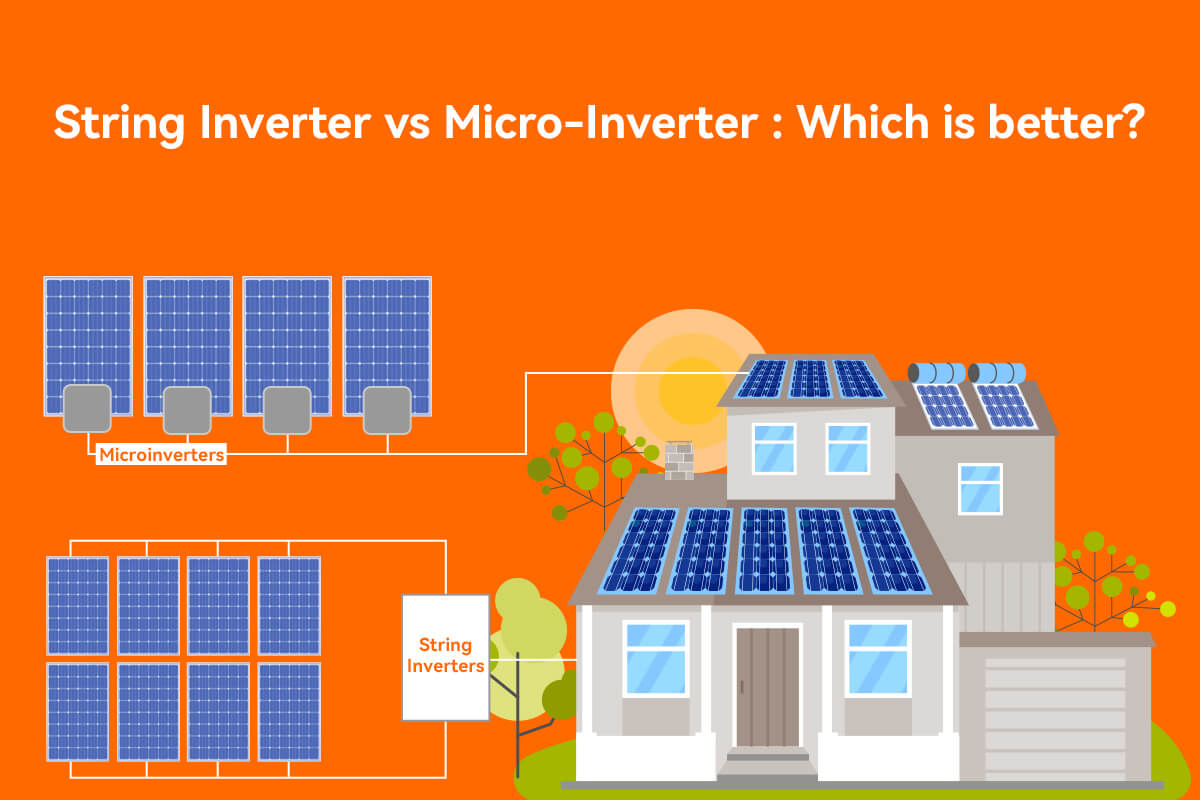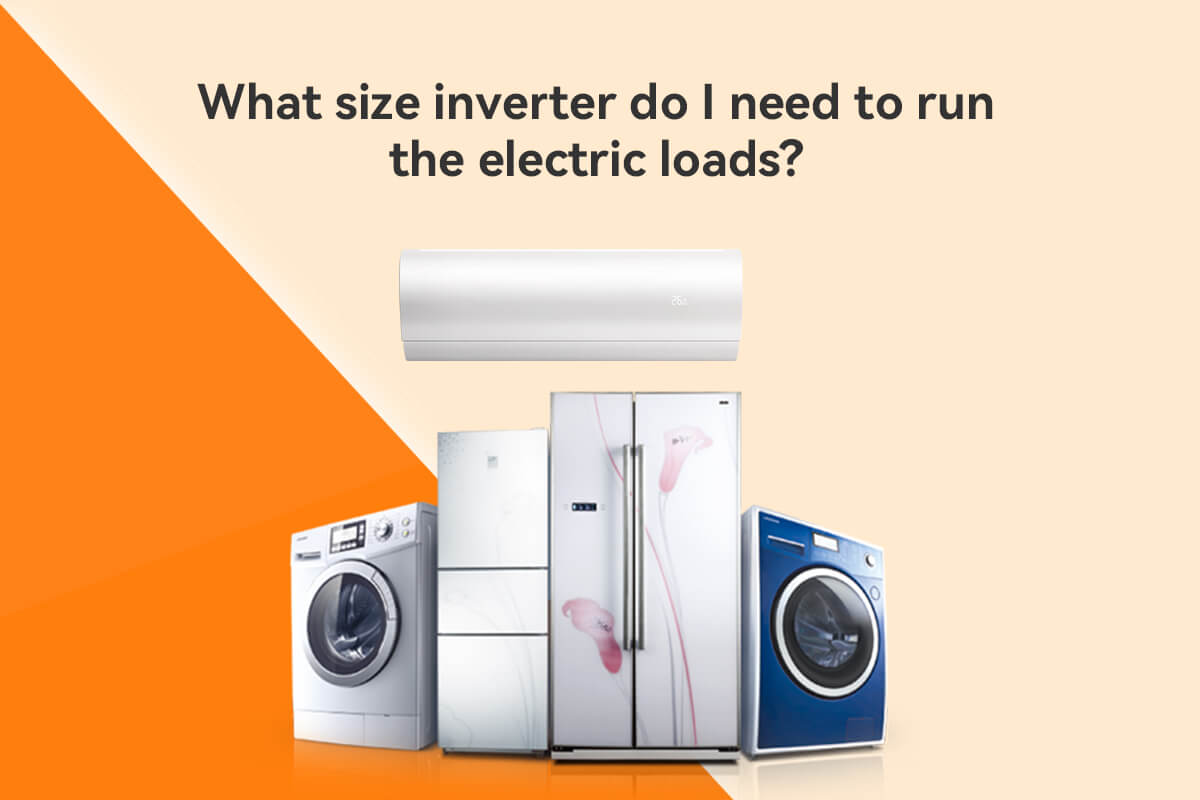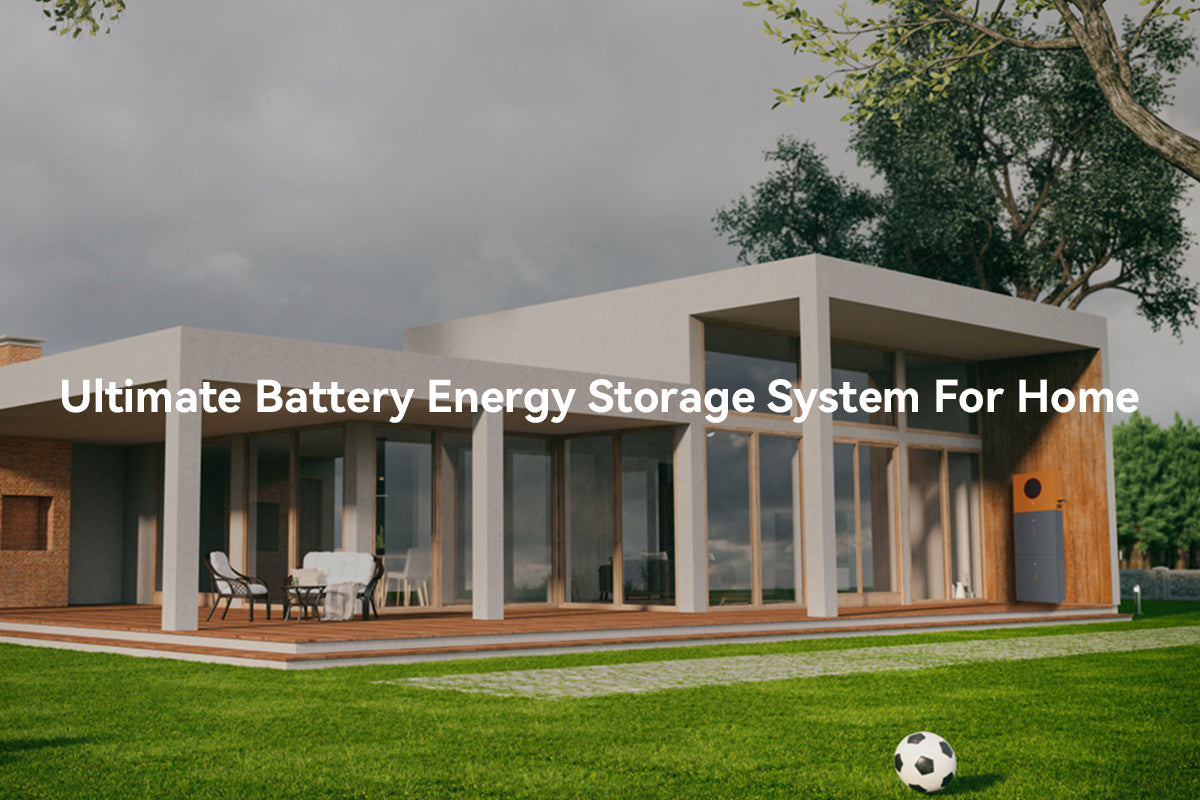Although the ultimate purpose of both inverters is to convert DC power to AC power, or vice versa, the connection between solar panels and inverters will vary depending on the application scenario, and the type of inverter that needs to be installed changes as well. In order to make the right decision, you need to distinguish between string inverters and micro inverters.
What is string inverter?
Compared with micro inverter, string inverter converts DC current to AC current connecting with many pieces of solar panel. In other words, there is a one-to-many relationship between string inverters and solar panels.
String inverters are commonly used in distributed solar power systems.The term "string" refers to a group of several panels in a system, where each string (1-5kw) is connected directly to a string inverter. With Maximum Power Peak Tracking (MTTP) on the DC side and parallel connection to the grid on the AC side, it has become the most popular inverter on the international market today.
Note:
You also need to be aware that although central inverters are connected to the string at PV input as much as string inverters, they are used in solar centralized generation systems and solar distributed generation systems respectively.
Usually, the central inverters have a power of 500kW or more and the DC power from several strings with the solar panel in parallel, whereas the string inverters are only responsible for converting the DC power of a string.
-
Cost saving
As string inverters can be connected to several solar panels, the number of string inverters required to convert the same amount of power is much smaller than for micro-inverters, and the cost is lower.
-
Long power generation time
String inverters with a wide MPPT voltage range, generally 500-1500V, can be matched with solar panels more flexibly and generate electricity for a long time in rainy and foggy parts of the country.
-
Lower probability of wiring faults
As the connections between the solar panels and the links between the groups of solar panels and the string inverter are in series, there is less chance of wiring connection faults when assembling string inverters.
Disadvantages of string inverter
-
Vulnerable to shading
The link in series has both positive and negative aspects, if any of the solar panels is in the system are shaded by other item or damaged, the efficiency of the whole solar system will be compromised because by connecting the PV models in series, each string is seen as whole.
-
Less efficiency
Compared to microinverters, each string inverter can only track the maximum power point of a string, not the maximum power point of each solar panel, so it is less efficient than microinverters and cannot identify fault problems with individual solar panels.
Application field of string inverter
As the technology evolves, the string inverter is not only responsible for converting DC power into AC power, but also for more intelligent applications such as data acquisition and manual interaction.
String inverters are widely used in distributed photovoltaic power generation systems, including small and medium-sized power generation projects for households, industrial and commercial rooftops and photovoltaic poverty alleviation.
What is microinverter?
Different from string inverters, micro inverters have a one-to-one relationship with the solar panels which are in parallel. They are connected directly to the solar panels and track the maximum power point for each PV module individually, with a single power of typically less than 5 KW, and are individually connected to the AC grid after the current conversion.
Note:
As with microinverters, power optimizers are mounted on each solar panel, often integrated with the PV module. However, instead of performing DC-AC conversion at the module, the power optimizer regulates the DC output from the solar panel and feeds it to the string inverter. This combination is slightly more efficient in terms of capacity than a system using string inverters only.
Usually, the central inverters have a power of 500kW or more and the DC power from several strings with the solar panel in parallel, whereas the string inverters are only responsible for converting the DC power of a string.
String inverters are commonly used in distributed solar power systems.The term "string" refers to a group of several panels in a system, where each string (1-5kw) is connected directly to a string inverter. With Maximum Power Peak Tracking (MTTP) on the DC side and parallel connection to the grid on the AC side, it has become the most popular inverter on the international market today.
Advantages of microinverter
-
Easy expansion
When increasing the capacity of an existing PV system, you can add new micro-inverters directly in parallel without considering the configuration of the solar energy system. The microinverters have a smaller individual power, which has less impact on the existing PV system, making the expansion of the entire PV system more flexible.
-
Higher efficiency
The microinverter is connected to each PV module in parallel, that is say, there is no series connection between the solar panel, so that the maximum power point tracking function can be achieved for a single PV module, so that each solar panel is output at maximum power.

-
High reliability
The micro inverters are connected to each solar panel in parallel to the grid, making them more independent and not interfering with each other in the event of a fault. In the event of a failure of one or even more modules, the system can continue to supply electricity to the grid, resulting in high availability.
Disadvantages of microinverter
-
Expensive
For the same size of plant, more micro inverters will be required and the overall system cost is significantly higher than for string inverter solution.
-
High maintenance costs
And because of the high number, the economic, time and labor costs of microinverter maintenance are also relatively high.
-
High reliability
The micro inverters are connected to each solar panel in parallel to the grid, making them more independent and not interfering with each other in the event of a fault. In the event of a failure of one or even more modules, the system can continue to supply electricity to the grid, resulting in high availability.
Application field of microinverter
Microinverters are often used in distributed power generation systems such as residential and commercial/industrial rooftop applications, but are more cost effective with small to medium power applications.
Conclusion
Taking into account the different technologies of inverters and their market strategies, string inverters are still the mainstream choice in the market.
As a new technology, micro inverters are still in the development stage, facing with the challenges of a high technical threshold and a small number of suppliers.




Leave a comment
This site is protected by reCAPTCHA and the Google Privacy Policy and Terms of Service apply.